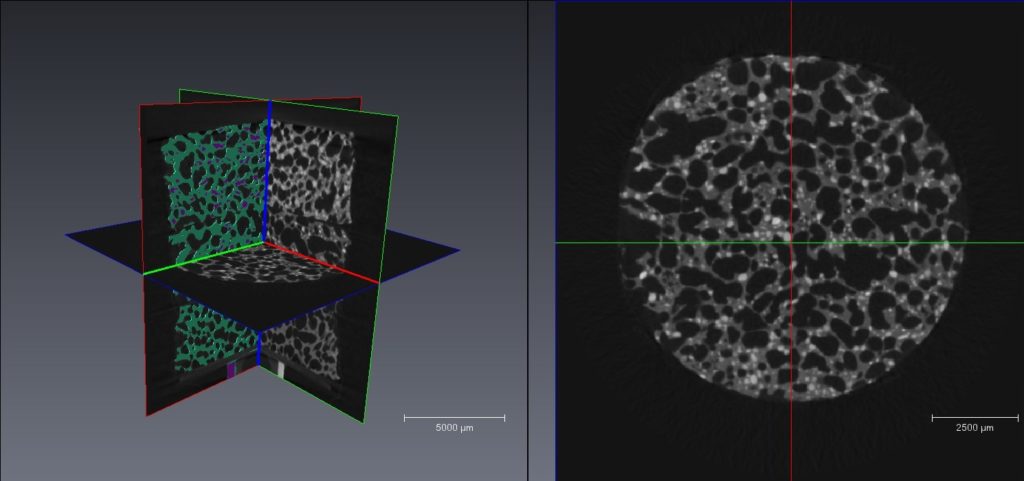
More functional synthetic bone graft substitutes are developed with reliable porosity analysis and properly chosen analysis methods
Posted on 08.04.2020 by
High porosity, optimal pore size and high interconnectivity of the pores are essential for successful tissue ingrowth and bone regeneration in synthetic bone graft substitutes. Adaptos® is a highly porous composite material in which the porous structure is created by supercritical CO2-foaming. The development of Adaptos® is based on high-quality research.
A study describing and comparing analysis methods to reliably evaluate the 3D pore structure of supercritical CO2-processed polymer- and composite structures was published recently in the Journal of Royal Society Interface1, which is listed in Scimago Journal Rank with both Biomedical engineering and Biomaterials in Quartile 1.
Microcomputed tomography (micro-CT) image-based computational models and analyses provide important quantitative data about the scaffold structure during material development. They enable the modelling and visualization of particle penetration or fluid flow within the 3D pore network, which is important when evaluating the suitability of the developed structure as a bone graft. Better functioning bone graft is a more reliable and consistent tool for the surgeons in the treatment of bone defects.
This study firstly compared commonly used micro-CT analysis methods in tissue engineering to evaluate the pore structure of supercritical CO2 -processed polymer and composite scaffolds. Secondly, these methods were validated by using iron labelled microspheres and labelled cells, whose dispersion inside the structures were imaged with micro-CT. The study provides novel insights on the reliability and applicability of micro-CT based analysis methods of porous structures intended for tissue engineering.
Contact us at info@biomendex.com to learn more about Adaptos®.
